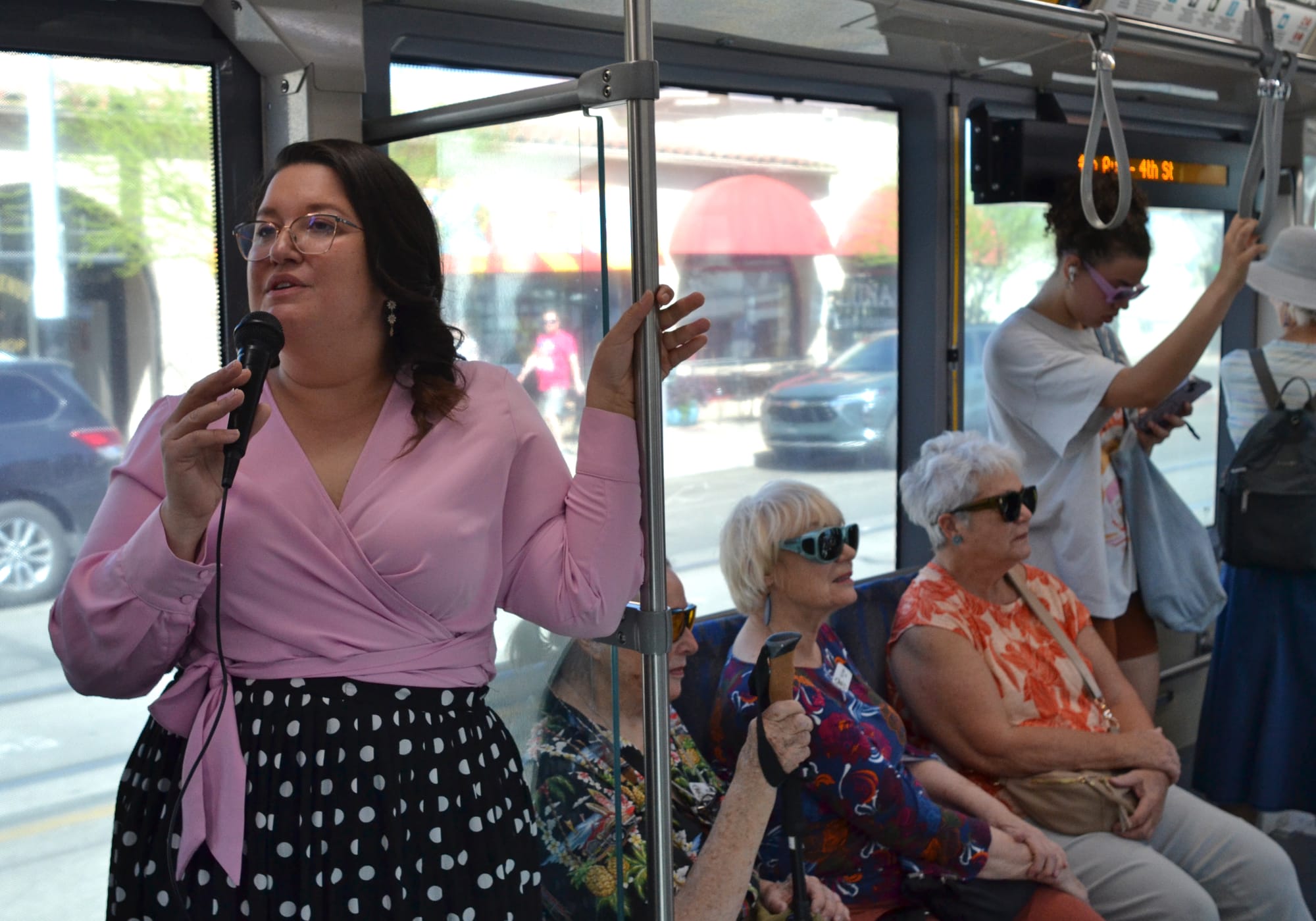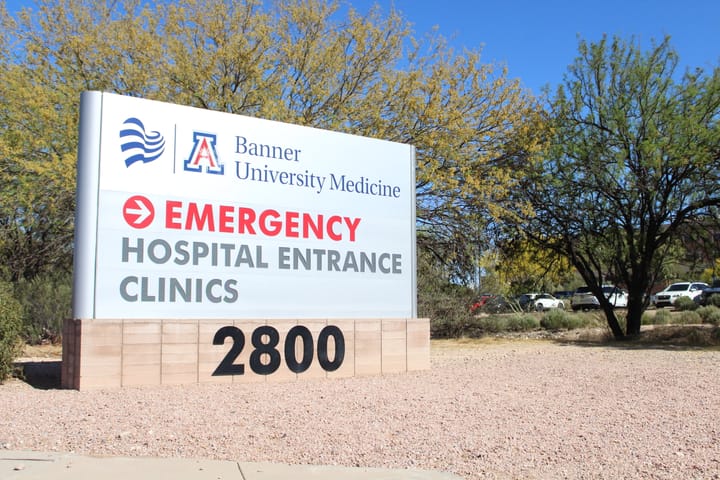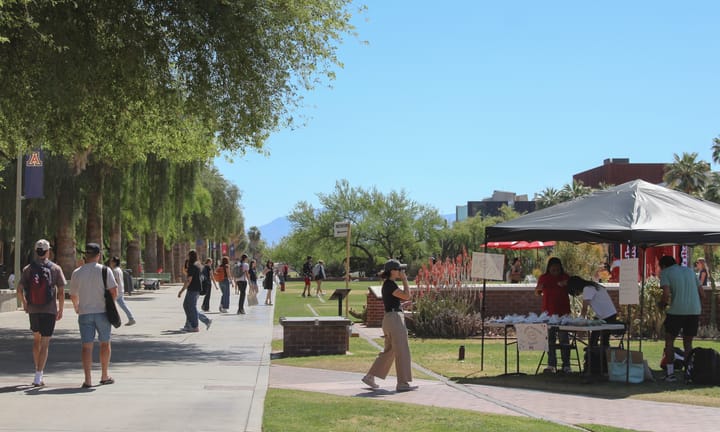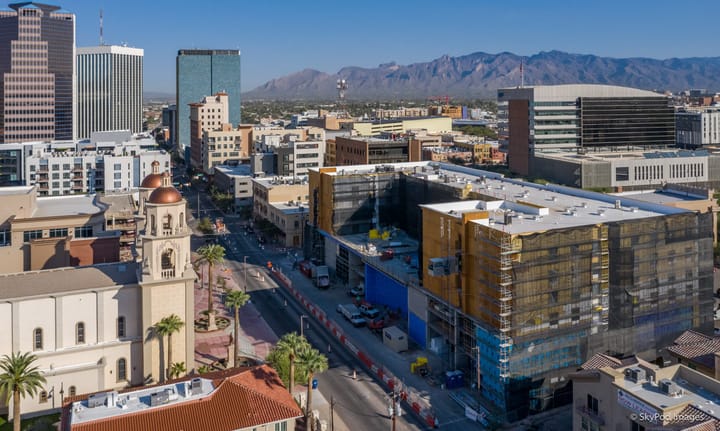On the move: Streetcar sessions highlight transit’s role in Tucson’s growth
During TENWEST Fest, Sun Tran hosted presentations aboard the streetcar to showcase how Tucson’s transit system has boosted business, reduced traffic and transformed the downtown area.

Attendees at last week’s TENWEST Fest had the opportunity to learn about the city’s streetcar system while actually riding it, during moving presentations focusing on the streetcar’s role in boosting local business, easing traffic and transforming Tucson’s urban core.
TENWEST Fest is a hybrid of a summit and community festival focused on technology, entrepreneurship and creativity.
Sun Tran’s Director of Marketing and Communications Cindy Glysson and Community Outreach Manager Luz Navarrete hosted two presentations, taking attendees on a ride around downtown and the University of Arizona area while talking about why public transportation is important, and how it can bring money and businesses into Tucson.
The Sun Link streetcar system was finished in 2014 and cost more than $200 million, Tucson’s largest construction project to date.
City and Sun Tran officials conducted extensive public outreach, hosting forums and meeting with business owners in the area to share plans and seek feedback.
While the streetcar is popular among UA students and others, some people were initially skeptical of the plan, Glysson said.
“Some people were worried about how it affected their business, or would ask why do we need a streetcar,” Glysson said. “But once it was built they began to understand what it could do.”
During the planning process, Sun Tran employees traveled to Portland to learn more about the city’s streetcar system.
And in the 11 years that Tucson’s streetcar has been up and running, its journey has come full circle, with cities now sending employees to Tucson to learn more about Sun Link.

Public transportation reduces traffic in congested areas like downtown and near the UA, Glysson told attendees, who were packed into the streetcar, filling it to capacity.
“Imagine if everyone on here was driving,” Glysson said. “Can you imagine how much more traffic there would be downtown?”
The streetcar system also makes it easier to get around without worrying about parking, Glysson said, telling attendees that riders can park in one area for the whole day and travel to restaurants and shops just by using the streetcar.
Outreach Manager Navarrete said that riding can be an experience, but it isn’t just an option for the public to get around. It also brings business and money into the city.
The downtown area has changed drastically in the years since the streetcar was completed, from a place where people didn’t usually go to an area with a wide variety of shops and restaurants, Navarrete said.
More than 50 new restaurants and bars have been added along the route since its construction, along with 1,500 housing units and over $1 billion in private investment.
The streetcar has also allowed for the creation of more student housing farther away from the university, according to Navarrete, since students can now get around more easily while living outside of the immediate area.
And corporations like Unisource Energy, Hexagon Mining and Caterpillar Surface Mining and Technology Division have all moved near downtown since the construction.
Navarrete said that when Caterpillar moved to Tucson, they cited the streetcar as a selling point to their employees who would live in the area, because of the ease of movement between home and work.
The streetcar has also boosted job growth in the region, with Sun Tran saying that the Sun Link system has led to the creation of more than 1,200 new jobs related to the streetcar, and another 1,500 regional jobs related to the system.
Colton Allder is a journalism major at the University of Arizona and Tucson Spotlight intern. Contact him at callder1995@arizona.edu.
Tucson Spotlight is a community-based newsroom that provides paid opportunities for students and rising journalists in Southern Arizona. Please support our work with a paid subscription.




